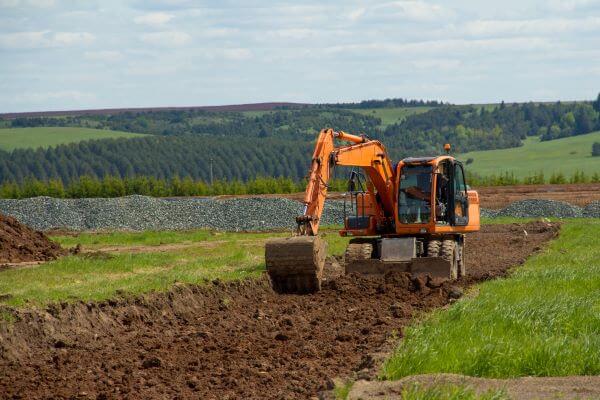Insurance, health & safety, and legal requirements when building on a farm

Investing in a building project on a farm can lead to increased revenue and new business streams, but a robust risk assessment is crucial to a successful project.
Farmers often carry out building work themselves, especially alterations to existing structures, but this kind of work comes with significant risks.
The Health & Safety Executive warned of these risks in a recent report, saying: “Farmers are very resourceful and can often turn their hand to most things. Start by asking yourself if it is a construction job or a maintenance job and, in either case, if you can do it yourself. If in doubt, consult a professional builder for advice?
“The law requires that health and safety is managed throughout all stages of a building project, from conception, design and planning through to site work and subsequent maintenance and repair of the structure. The law applies to all work building projects and refurbishments. It does not apply to work on your domestic dwelling (farmhouse) but will apply to refurbishment on any domestic premises you provide to employees.”[1]
The bottom line is that construction is a complicated business and specialist advice is often required.
Risks include:
Failures in the design processPoor workmanship on siteMistakes in the construction processRisks associated with building on a working farmEmployees from a range of different companies working on site at the same timeHealth & Safety threats to all involved in the projectThe threat of asbestos on site
Losses or damage arising a result of any of these risks can be expensive, regardless of the size of the project – and easily run to millions of pounds.
This means comprehensive insurance is crucial, as well as good risk assessment advice in advance of the project.
What insurance is needed?
Cover should include:
Contract works (works in progress and materials on site)Employers’ liability (claims brought by employees)Public liability (claims brought by members of the public)Hired in plant (rented tools, machinery and other equipment)Professional indemnity (for professional advisers – it covers them for compensation payable for rectifying mistakes)
Where to start?
The farmer, landowner or employer will normally start the process by commissioning an architect to design the building.
Always check that candidates have professional indemnity insurance and ask to see copies of the documentation. Then share it with a lawyer, insurance broker and / or rural insurance company to check it is fit for purpose.
The next step is to select a main contractor who is responsible for the construction project. They will often bring in specialist subcontractors and other professionals when necessary.
Legal duties
The law imposes duties on anyone who employs a contractor to do construction work, which includes demolition.
These include:
Allowing adequate time for every stage of the workProviding relevant information about the site, including existing structures and the intended use of any new workplace buildingsChecking suitable management arrangements are in place during every stage of workMaking sure there are adequate welfare facilities on site before work begins.
If the construction is to last more than 30 days or involves more than 500 person days, then you must also:
Appoint a principal contractorEnsure a health and safety plan is in placeKeep a health and safety file.
Both you and the contractor have legal duties for health and safety that you cannot pass to each other by contract. This means you need to work with each other to make sure you get the job done safely.
Who should take out insurance?
It is normally the main constructor’s responsibility to insure the project if it is a new build. Ensure that this agreement is put in writing and that all parties are aware, even for small projects.
Then hire a lawyer to draft a building contract which stipulates who is responsible for insuring the works and outlines all responsibilities.
In the UK, the main building contract is the Joint Contracts Tribunal (JCT).
There are several types available, depending on the project, but the ‘Standard Building Contract’ and ‘Design and Build Contract’ are most common.
Construction work on existing structures
Procedures may be slightly different if work is being carried out on an existing structure, which already has a value.
Certain insurance responsibilities may fall solely or jointly, alongside the main contractor, to the farmer (or ‘employer’) named in the JCT. So, take advice.
On completion
When a project is completed, the contractor must provide a certificate of final completion and the contract works policy will automatically terminate.
At this point, be sure to arrange cover for the new building on a standard property owners policy. It can often be added to your existing farm policy.
‘Self-build’ construction projects
Farmers may choose to construct the building themselves, hiring in specialist tradespeople and equipment where necessary.
In these circumstances, a farmer must identify, source and purchase the insurance policies required.
Some farm insurance includes automatic contract works cover up to a certain limit, which covers works in progress and materials on site until completion on an ‘all-risks’ basis.
However, this is a complex area of insurance, so consult an insurance broker as soon as possible. It is not always possible to obtain cover once works are underway.
[1] https://www.hse.gov.uk/agriculture/topics/building.htm







